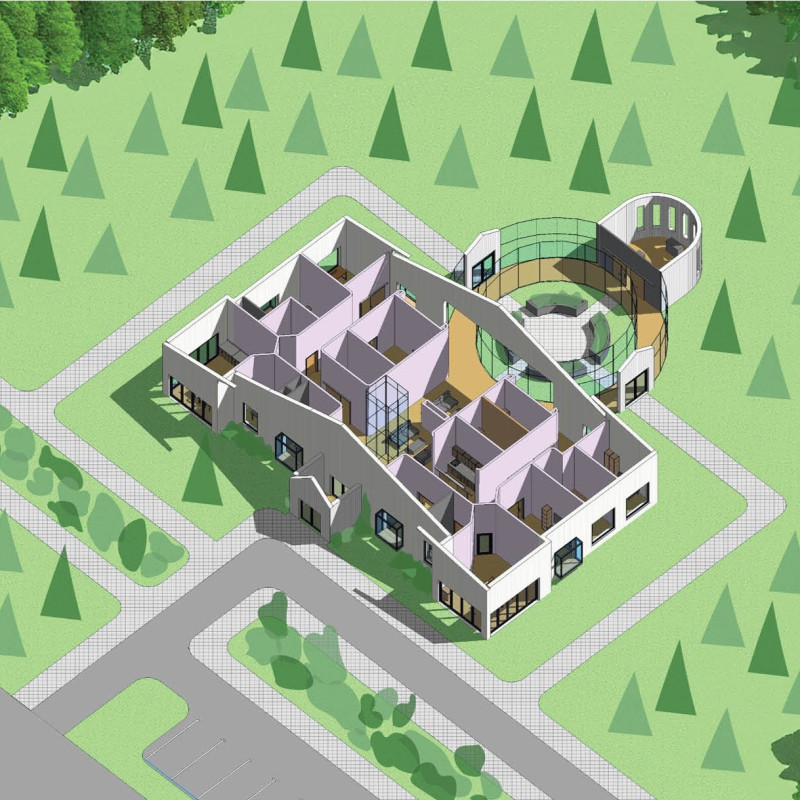5 key facts about this project
From its inception, this project was conceived with a clear understanding of its function within the community. It serves as a multifunctional space that meets the diverse needs of its users, whether they are engaging in social activities, working, or enjoying leisure time. Each area within the project has been carefully designed to enhance usability while prioritizing natural light and ventilation. This attention to the environment contributes to the overall user experience, making spaces feel more connected to the outdoors.
The architectural design embodies a modern aesthetic, characterized by clean lines and an uncluttered silhouette. The facade features a blend of materials that harmonize with the natural surroundings, reflecting a design ethos that values context and materiality. Incorporating elements such as locally sourced stone and timber helps to create a sense of place, making the building visually cohesive with the landscape. The thoughtful selection of materials not only addresses aesthetic values but also considers durability and sustainability, ensuring that the structure will withstand the test of time while minimizing its ecological footprint.
One of the unique design approaches employed in this project is its commitment to sustainable architecture. The inclusion of green roofs and rainwater harvesting systems exemplifies innovative strategies aimed at enhancing environmental performance. By utilizing renewable energy sources and maximizing the efficiency of building systems, the project demonstrates a forward-thinking perspective that aligns with contemporary trends towards sustainability in architecture.
Internally, the project is organized to promote fluidity and connectivity. Open-plan areas encourage collaboration and social interaction, while private spaces are strategically located to provide moments of respite. The careful arrangement of furniture and circulation paths guides movement throughout the building, enhancing the overall flow and functionality of the spaces. Additionally, the incorporation of biophilic design principles throughout the interior creates a welcoming atmosphere, enhancing users' well-being by fostering a connection with nature.
Landscaping plays a pivotal role in the project, with outdoor spaces designed to extend the living areas and foster community engagement. Patios, gardens, and communal zones allow for various activities, from casual gatherings to organized events, further reinforcing the project's role as a central hub within the neighborhood. These outdoor elements are seamlessly integrated into the overall architecture, blurring the lines between indoor and outdoor experiences.
The project exemplifies a careful balance between innovative design and practical functionality. Special attention has been given to acoustics, natural light optimization, and thermal comfort, ensuring that it meets the demands of modern living. The design also considers the future adaptability of spaces, allowing for flexibility in use as community needs evolve.
Overall, the project stands as an exemplary representation of modern architecture that respects its surroundings and embraces sustainable practices. It offers an engaging environment that serves the community while reflecting a deep understanding of the architectural context. For those interested in exploring this project further, I encourage a close examination of the architectural plans, sections, designs, and ideas presented. By delving into these details, readers can gain a more nuanced understanding of the thoughtful considerations that have shaped this exceptional architectural endeavor.























